New Bedford, MA Pollen and Allergy Report for Summer 2023
Pollen Allergy Trends in New Bedford, MA
When is pollen lowest in New Bedford, MA?

February
Lowest month total PPM
Avg. PPM
When is pollen highest in New Bedford, MA?

April
Highest month total PPM
Avg. PPM
How does pollen in New Bedford, MA compare to Massachusetts?
New Bedford has a higher average PPM than the state of Massachusetts.
New Bedford yearly avg PPM:
Massachusetts yearly avg PPM:
How does pollen in New Bedford, MA compare to the USA?
New Bedford has a higher average PPM than the USA.
New Bedford yearly avg PPM:
USA yearly avg PPM:
Is pollen worse this year in New Bedford, MA?
Spring 2023 was worse than spring 2022.
Spring 2023 PPM:
Spring 2022 PPM:
Average PPM in New Bedford, MA
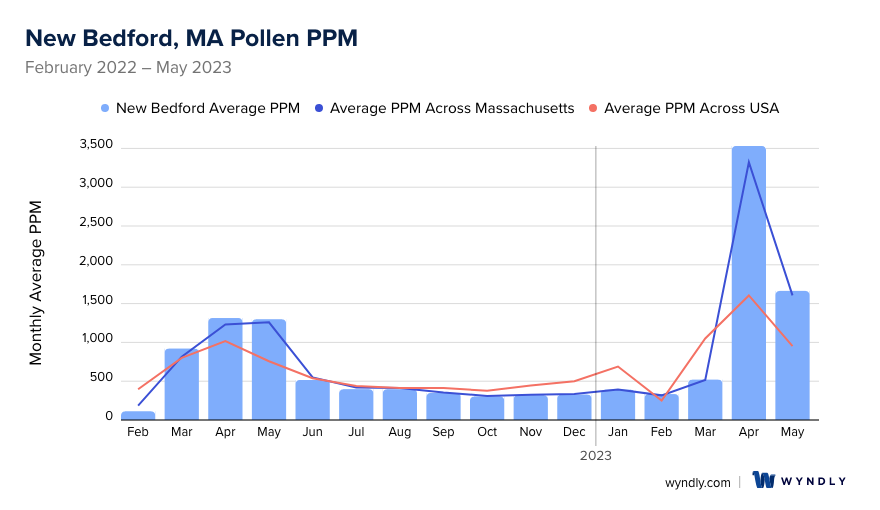
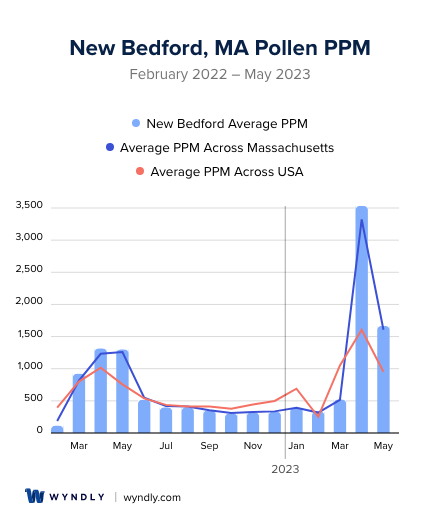
New Bedford, MA Pollen and Allergy Breakdown by Month
Grass
When is grass pollen highest in New Bedford, MA?
April has the highest grass pollen in New Bedford, MA with an average PPM of
When is grass pollen lowest in New Bedford, MA?
December has the lowest grass pollen in New Bedford, MA with an average PPM of
Tree
When is tree pollen highest in New Bedford, MA?
April has the highest tree pollen in New Bedford, MA with an average PPM of
When is tree pollen lowest in New Bedford, MA?
October has the lowest tree pollen in New Bedford, MA with an average PPM of
Weed
When is weed pollen highest in New Bedford, MA?
April has the highest weed pollen in New Bedford, MA with an average PPM of
When is weed pollen lowest in New Bedford, MA?
February has the lowest weed pollen in New Bedford, MA with an average PPM of
New Bedford, MA Pollen Monthly Breakdown by Pollen Type
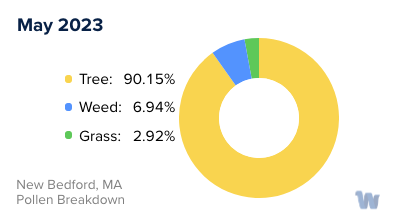
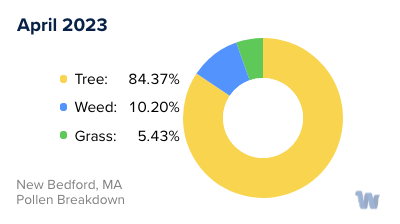
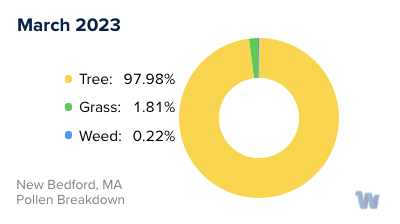
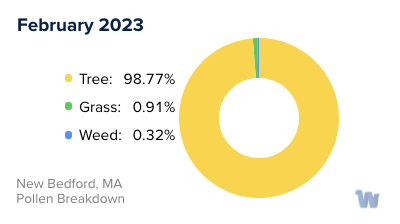
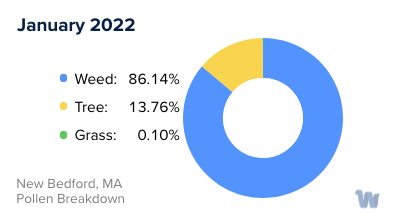
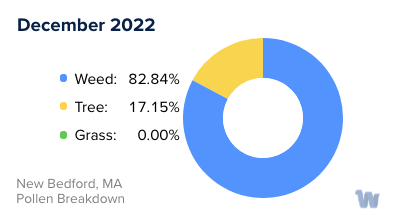
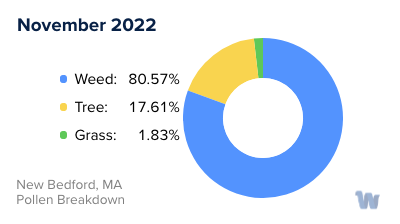
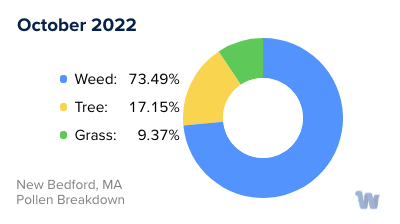
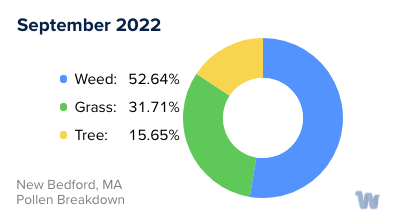
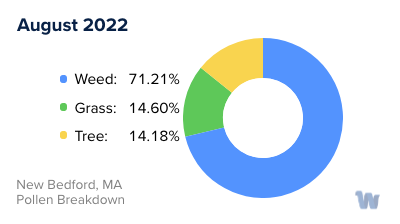
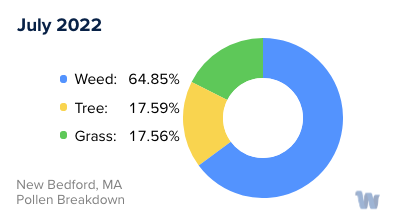
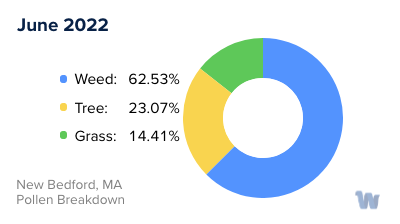
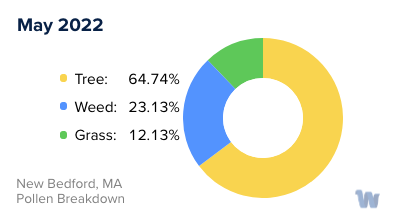
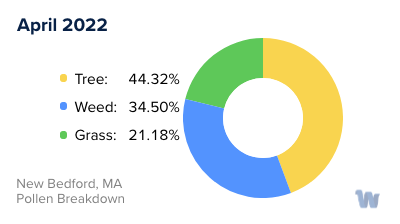
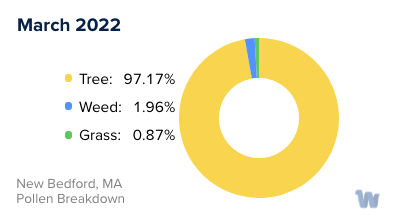
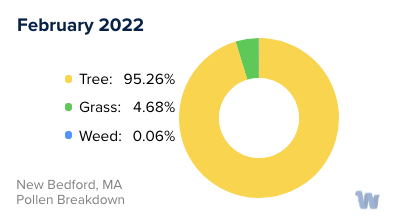
Pollen and Hay Fever in New Bedford, MA
In the charming city of New Bedford, Massachusetts, the change of seasons ushers in an array of vibrant natural beauty. Yet, this transition also brings a less welcome guest: pollen. For many residents, pollen allergies, also known as hay fever or seasonal allergic rhinitis, become part of their seasonal rhythm.
New Bedford, like much of New England, experiences a high volume of tree pollen in the spring. The primary culprits are oak, maple, and birch trees. These trees release microscopic grains into the air to fertilize other plants. However, when inhaled by individuals with hay fever, these tiny particles can trigger an immune response leading to a cascade of symptoms including sneezing, runny nose, and itchy eyes.
Following the spring, the summer ushers in grass pollen season. In New Bedford, you'll find that timothy grass, Kentucky bluegrass, and ryegrass are among the most common offenders. These grasses often bloom and release their pollen from late spring into early summer.
Finally, as the air begins to cool in the late summer and autumn, weed pollen enters the stage. Ragweed, in particular, is notorious throughout the United States, and New Bedford is no exception. This plant can produce a massive amount of lightweight pollen that can travel for miles, impacting even those who don't live near a ragweed plant.
The timing and severity of pollen allergies can vary year by year, and are influenced by factors such as temperature, rainfall, and wind conditions. It's essential to note that even on days with no wind, pollen can still be present in the air, hitching a ride on clothing, pets, and even your car.
Understanding the patterns of pollen production can be empowering for those who suffer from seasonal allergies. Knowing what to expect and when can help individuals prepare and adjust their outdoor activities to minimize exposure. While it may be an unwelcome part of the changing seasons, pollen is a vital part of our ecosystem and a sign of the natural cycles of life in New Bedford.


